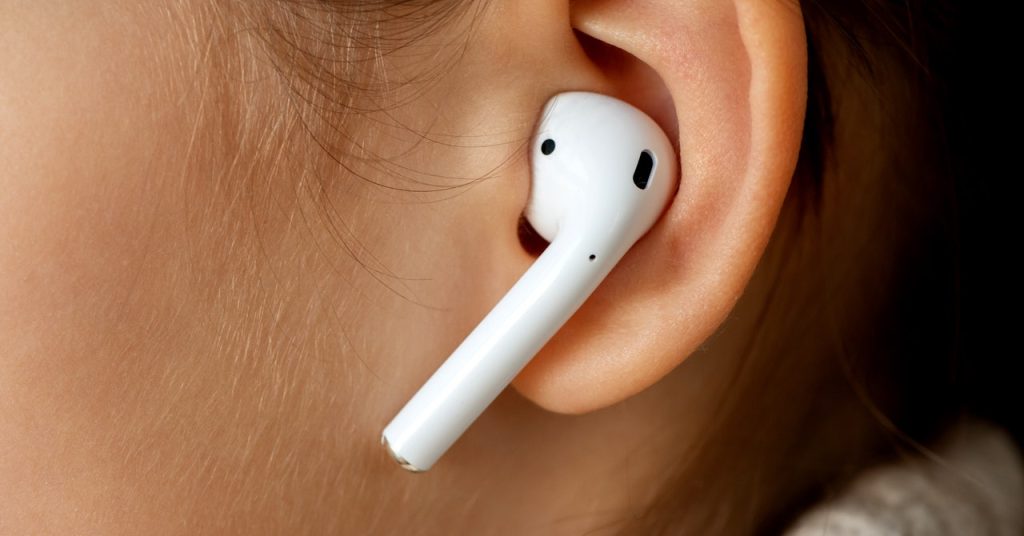Understanding and Managing Hearing Loss
Hearing loss is a common issue that may affect you or someone you know during your lifetime. Protecting your hearing in loud environments is crucial to prevent conditions like tinnitus, often perceived as a ringing in the ears.
Monitoring Volume Levels
Using Apple Devices
Apple offers built-in features to help you track volume levels. If you use headphones or earbuds with your iPhone or iPad, follow these steps:
- Go to Settings > Control Center > Hearing.
- Connect your headphones and play audio.
- Swipe down from the top right to access the Control Center and tap the ear icon to see the decibel level.
If your headphones have a microphone, you can also turn on Live Listen to measure the noise level of your surroundings.
 Photograph: Apple
Photograph: Apple
Using Real-Time Captions
On Android Devices
Google introduced Live Caption in 2019, which can automatically caption videos and spoken audio on your device in real time without needing a Wi-Fi or cellular connection. To enable it:
- Go to Settings > Accessibility > Live Caption.
- Check your Android version by heading to Settings > About Phone > Android Version.
You can also use Live Caption in Google’s Chrome browser by navigating to More (three vertical dots) > Settings > Accessibility, and toggling on Live Caption.
For Pixel 2 or newer devices, there’s an additional feature:
- Go to Settings > Accessibility > Live Caption > Type Responses During Calls.
- This allows you to type responses that can be read aloud to your caller and select the voice for these responses.
 Google via Simon Hill
Google via Simon Hill
On Apple Devices
Apple’s live-captioning system is still in beta. To try it:
- Go to Settings > Accessibility > Live Captions.
- Turn on Live Captions (Beta).
This feature works across all apps, providing captions for streaming video, FaceTime calls, videoconferencing apps, and even in-person conversations. It requires iPhone 11 and later running iOS 15 or later, and Macs with macOS Monterey or later.
Sound Notifications
Google’s Sound Notifications feature helps you stay aware of important sounds around you. To enable it:
- Go to Settings > Accessibility > Sound Notifications.
- Tap Open Sound Notifications.
You can select sounds like fire alarms, sirens, doorbells, and more. Customize notifications and add custom sounds, such as your washing machine beep, to know when it is done.
Filtering Sounds with Headphones
On Android Devices
Google’s Sound Amplifier app can help filter and amplify sound. To use Conversation Mode:
- Go to Settings > Accessibility > Sound Amplifier.
- Tap Open Sound Amplifier > Phone Mic > Conversation Mode.
Point your phone’s camera at the person you want to chat with to reduce background noise and focus on your conversation partner. Adjust sound settings as needed.
On Apple Devices
iPhone owners with supported Apple or Beats headphones can adjust sound settings to improve clarity:
- Go to Settings > Accessibility > Audio & Visual.
- Turn on Headphone Accommodations and tap Custom Audio Setup.
You can also use Live Listen by adding Hearing to the Control Center and placing your iPhone microphone close to the person you want to hear better.
 Apple via Simon Hill
Apple via Simon Hill
For AirPods Pro users, Conversation Boost under Transparency Mode amplifies voices to help in noisy environments.
“Keeping certain features as stand-alone apps also allows for regular updates so other devices can benefit from improvements.”
Conclusion
By utilizing these tools and features, you can better manage and protect your hearing, ensuring clearer communication and awareness of your surroundings.

3 Comments
Ever thought about how dependent we are on smartphones, even for hearing?
Who knew that a tiny device could help tune out the noise and enhance the sounds you need!
NoiseReality: Are we seriously outsourcing our hearing abilities to our smartphones now?